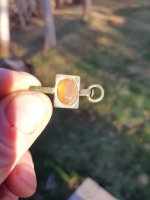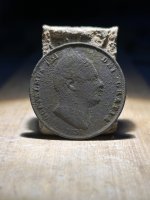KY Hiker
Bronze Member
- Oct 28, 2014
- 1,537
- 3,220
- Detector(s) used
- Whites
- Primary Interest:
- All Treasure Hunting
Comparing Swift's trip to Boone's trip in 1767....
Both John Swift and Daniel Boone where in "fact" both in the upper Yadkin river valley in the summer and fall of 1767, the Swift journal tells "That Swift arrived in the Yadkin the 16th of December 1766, and remained there until the next trip to the mines in October of 1767. The journal tells of Swift gathering supplies for such a large packtrain being the reason so much time was taken in between trips, nearly 100 pack animals were taken to the mines this year. Swift also mentions "by now several others not of " our company" has became suspicious of our activities...Swift set out for the mines October 1st 1767, and arriving at the mines the 2nd or 3rd week in November.
(Quote from Steelys book) "In 1767 Swift left North Carolina with the largest pack train thus far, and attempted to leave in secret, noting that several others had become suspicious of his activities. Here some Swift researchers connect Daniel Boone and other Yadkin Valley longhunters to the Swift legend, contending that Boone and several men tried to follow Swift and find his mines".
Now let's look at Boones trip in 1767, Boone's trip was in the Fall or early winter of 1767 around the same time Swift made his trip into Kentucky (from the book Life of Daniel Boone) "On Boone's first trip into Kentucky he came by way of the Sandy River, Boone and company started from the upper Yadkin river valley in North Carolina. They crossed the Blue ridge, Alleghenies, crossed the Holston and Clinch rivers near their headwaters. They fell upon the headwaters of the West fork of the Big Sandy River, and continued their journey along its banks. They came to a "salt spring" ten miles directly west of the present-town of Prestonsburg on the Lick fork of Middle creek, a tributary to the West of "Louisa fork" of the Big Sandy river in Floyd County, Kentucky.
Boone here got caught in a huge snow storm.
(Boone describing the salt spring in his own words) "The salt spring which issued from the foot of a rocky bluff on the southern bank of the stream proved more valuable to them than a Mine of the precious metals, for it drew in great numbers of buffalo".
Notice Boone mentions "Mine of the precious metals" comparing it to the salt spring they found after being stopped by a huge snowstorm. I'm almost convinced that Boone was indeed looking for Swifts company During this trip. Both Swift and Boone were in Kentucky the same time in the winter of 1767, on Swifts return from the mines he went out by way of the Sandy river to Fort Pitt on his way to Alexandria, Virginia. This could be one reason why in just two years later Swift and crew decided to abandon and conceal the mines in 1769. Boone made another trip into Kentucky in 1769 the same time Swift made his last trip to his mines in 1769 and concealing them. There is a good chance that Boone was getting close to Swifts workings, thus giving Swift the reason for concealing his mines..
My only hesitation on this theory is how could Swift and company along with a large long pack train slip away from a long hunter/tracker who could read animal sign well like Boone? He, who probably only came in with 1-3 animals for hauling pelts and skins out on. Comparing this in modern terms, if Swift was a semi 18 wheeler on the interstate and Boone was following it from a distance in a lighter faster sedan how could the semi slip away from the sedan?
100 pack animals are going to leave deep sloppy sign for Boone to find and follow even if he was a day or two behind them...unless they moved within the creek beds to hide the tracks. Even at this, the animals would have to graze somewhere and Boone should have seen that.




